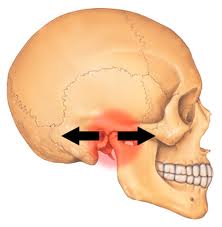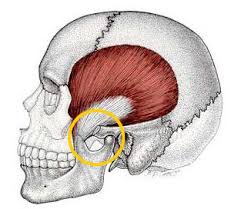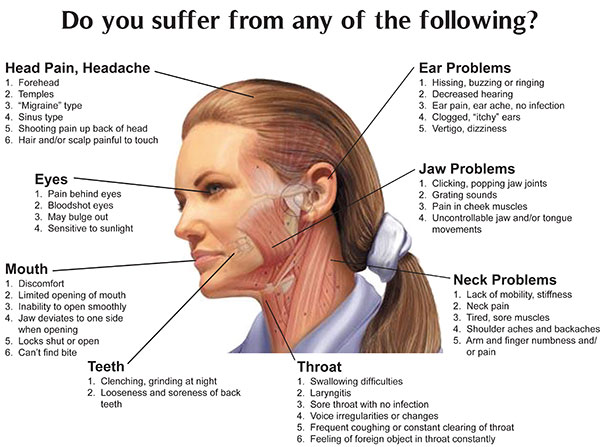What is TMJ, TMD, and is There a Cure?
November 14th, 2013
 The Temporomandibular Joint, or (TMJ) is a hinge joint that connects your lower jaw to the bone of the skull located just in front of the ears. This joint allows the jaw to move freely so you can talk, chew, yawn, etc. The muscles that attach to the joint help control the position of the jaw and its movements. Often, many confuse TMJ with the term TMD, Temporomandibular Joint Disorder. Whether you refer to it one way or the other, TMD is a painful and often frustrating condition that, if not treated, can cause serious issues.
The Temporomandibular Joint, or (TMJ) is a hinge joint that connects your lower jaw to the bone of the skull located just in front of the ears. This joint allows the jaw to move freely so you can talk, chew, yawn, etc. The muscles that attach to the joint help control the position of the jaw and its movements. Often, many confuse TMJ with the term TMD, Temporomandibular Joint Disorder. Whether you refer to it one way or the other, TMD is a painful and often frustrating condition that, if not treated, can cause serious issues.
What Is TMD?
Temporomandibular Joint Disorder encompasses a group of problems that can happen with the Temporomandibular Joint. While a serious condition, most research on the disorder has not determined a single cause. Sometimes it can be a small problem that’s more of an annoyance than anything else, while other times it can greatly affect your livelihood.
The least severe cases of TMD can be caused by slight displacement of the joint, which causes pain when biting down hard on food. The pain shoots through the side of the mouth to the joint. While certainly not a serious condition, it’s no walk in the park. The pain can cause great discomfort along with being a tough distraction.
 In the most severe cases, TMD can drastically change your life and become a very debilitating problem. The disc within the jaw joint can slip out of its position, most likely during sleep. When the person awakes, they discover that their jaw will not open more than a few millimeters. The person can’t open their mouth to eat, talk, or even brush their teeth.
In the most severe cases, TMD can drastically change your life and become a very debilitating problem. The disc within the jaw joint can slip out of its position, most likely during sleep. When the person awakes, they discover that their jaw will not open more than a few millimeters. The person can’t open their mouth to eat, talk, or even brush their teeth.
Whether your case of TMD is severe or moderate, there are a few signs that can signal an opportunity to fix the problem before its too late. Those symptoms include:
- Pain in jaw muscles and joints
- Pain in face and neck
- Sore and stiffened jaw muscles
- Clicking or popping sounds when moving jaw
- Noticeable change in the upper and lower teeth’s positions.

Is There a Cure?
There are several ways to detect jaw displacement as well as to cure the issue before it becomes serious. At Water Tower Dental we first determine how serious the issue and where exactly the problem is located. Luckily, many of the symptoms above can also be caused by neuromuscular dysfunctions.
We start by using a low-level frequency Transcutaneous Electrical Neural Stimulation, or TENS, unit. As it delivers small electrical impulses to the jaw muscles, it relaxes the to find the jaw’s ideal positioning.
A JVA or Joint Vibration Analysis is also used to measure sounds in the jaw joint. The information received helps us determine if the problem is part of the jaw muscle or if there is jaw joint damage and how much.
Once we determine what the main causes for the discomfort and pain, we can decide on a proper technique to fix. If improper jaw alignment is the case, and the Temporomandibular Joint is out of place, we can create a custom orthotic appliance to hold the patient’s jaw for proper alignment. The brace is worn for three months or until the jaw’s bite stabilizes. Afterward, we are able to alleviate any other symptoms through further therapy, drug therapy, and- in worst cases- surgery. Some patients may need further help and even use an orthotic appliance for the rest of their life.
If you’ve experienced any of the symptoms above, it’s wise to contact your dentist for a proper examination before the issue becomes too serious. Call Water Tower Dental today for the number one rated dentist in Chicago. We’d be happy to help you get on your way to a better, brighter smile.






 Website Powered by Sesame 24-7™
Website Powered by Sesame 24-7™